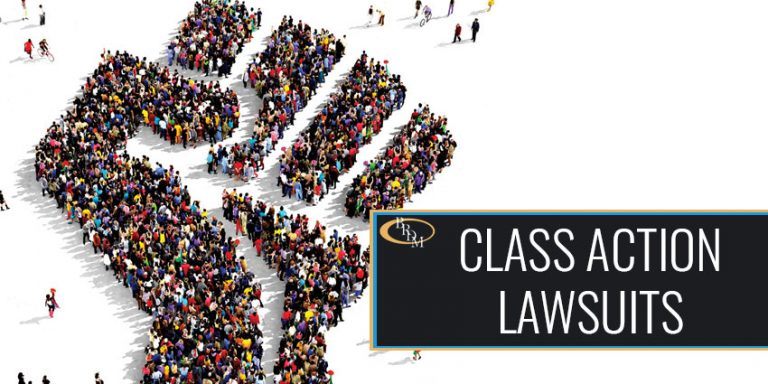Assertio Class Action Lawsuit: Insights into Class Action Lawsuits
Assertio Class Action Lawsuit: Insights into Class Action Lawsuits
Blog Article
Checking Out Class Action Suits: What You Need to Know
Course activity suits have actually ended up being significantly prevalent in today's legal landscape, with people joining forces to seek remedy versus corporations and organizations. In this discussion, we will certainly check out the ins and outs of class activity suits, losing light on their meaning, the needs for filing, and the prospective advantages and disadvantages included.
The Definition of Course Activity Claims
A class activity claim is a lawful action filed by a team of individuals who have comparable cases versus an offender. Class activity legal actions are normally brought when the number of prospective complainants is also big for private lawsuits to be practical.
One of the crucial components of a course activity claim is that the lead complainant, additionally called the course rep, represents the passions of all the course participants. The court assigns the lead plaintiff based on their capacity to fairly and properly stand for the course. The lead complainant functions very closely with the class activity lawyer to develop a strong case and look for payment or various other solutions in support of the whole course.
In order for a course action suit to proceed, the court has to accredit the class. This means that the court establishes that the legal action satisfies specific requirements, such as numerosity (a big adequate number of class members), commonness (common questions of law or truth), typicality (the insurance claims of the lead plaintiff are typical of the course), and adequacy of depiction (the lead complainant and class advice are qualified of representing the class's interests) Once the course is certified, the legal action can progress, and any kind of judgment or negotiation reached will apply to all course participants unless they select to opt-out.
Course activity suits offer an important function in giving accessibility to justice for individuals that might not have the resources to seek their cases separately. They additionally advertise effectiveness in the lawful system by settling similar insurance claims into a solitary action, reducing the problem on both the court and the celebrations entailed.
Needs for Filing a Course Activity Suit

One more requirement is that the class should be completely many. The specific variety of course members required may vary depending upon the territory and the nature of the situation. Nevertheless, it is typically anticipated that the class needs to be big sufficient that signing up with all the individual plaintiffs right into a single suit is extra effective than having several different legal actions.
Furthermore, it is vital that the class representative, who is the specific or entity bringing the legal action in behalf of the course, has typical claims and defenses to those of the class members. The agent has to additionally be able to properly and fairly stand for the interests of the entire class.

Advantages and Drawbacks of Class Activity Suits
Course action lawsuits provide both advantages and downsides for complainants and defendants involved in the lawful process. On the one hand, one of the significant advantages of course activity claims is that they provide a effective and affordable means for individuals with similar cases to seek justice jointly. By settling various similar instances into one legal action, class actions simplify the legal process and save time and sources for both plaintiffs and offenders.
Another benefit of course activity suits is that they allow people with restricted sources to seek payment for their damages. In cases where the prospective recuperation is small, individual suits may not be economically sensible. However, by signing up with forces in a class action, complainants can merge their resources and boost their opportunities of acquiring a fair resolution.
In addition, course activities can advertise social modification by holding firms responsible for their activities. By accentuating extensive transgression or malfunctioning items, class activities can push firms to alter their methods, improve item safety, or apply reforms.
However, course activities likewise have drawbacks. One potential downside is that specific plaintiffs may have restricted control over the litigation procedure and the supreme end result of the situation. The lead complainants and their lawyers usually make crucial choices in behalf of the whole class, which may not constantly straighten with the private interests of each class participant.
Furthermore, class activities can be taxing and extensive, often taking years to reach a resolution. The intricacy and size of these legal actions can cause delays and prolonged lawsuits, which can be discouraging for both plaintiffs and accuseds looking for a timely resolution.
Actions Associated With a Course Action Legal Action
The process of a class action suit normally starts with the identification of a potential Archer-Daniels-Midland class action lawsuit course and the declaring of a grievance. When a group of people that share similar claims versus an accused is identified, the lead plaintiff, or class agent, submits an issue in behalf of the whole class. This complaint details the claimed misdeed and looks for damages or other alleviation for all members of the class.
After the issue is submitted, the court will certainly determine whether the instance fulfills the demands for class qualification. These needs normally include numerosity (a big enough class), commonness (comparable lawful cases), typicality (the lead complainant's insurance claims are depictive of the course), and adequacy of representation (the lead complainant and their lawyer can properly represent the course's rate of interests)
If the court licenses the class, notification is supplied to all potential course participants, providing the opportunity to opt-out if they want to pursue their own private cases - Assertio class action lawsuit. If an adequate variety of class members stay, the case will certainly proceed to the discovery phase, where both sides gather evidence and details pertinent to the claims
Adhering to exploration, the parties might participate in negotiation negotiations or continue to trial. If the instance goes to test and the class prevails, the court will certainly figure out the proper damages or alleviation to be granted to the course participants.
Current Site Course Activity Suits
With a strong understanding of the steps included in a class activity claim, it is currently important to check out some recent site instances that have actually made a significant influence in the lawful landscape. Assertio class action lawsuit. These situations have not just shaped the way class action suits are performed however have actually also brought about adjustments in numerous industries
One such site situation is the Volkswagen exhausts scandal, which led to the largest class activity settlement in vehicle history. This deception impacted millions of customers worldwide, leading to a class action lawsuit.
One more significant case is the Johnson & Johnson talcum powder suit. Thousands of women submitted claims against the business, declaring that their talcum powder items created ovarian cancer.
These recent landmark instances demonstrate the power of class activity lawsuits in holding companies liable for their actions and looking for justice for afflicted people. They act as instances of just how class activity suits can bring about substantial modifications and shield the rights of consumers.
Conclusion
In conclusion, class action legal actions are a legal system that enables a group of individuals to collectively look for justice for a common complaint. Understanding the actions and needs included in submitting a class action suit is vital for individuals looking for to seek this lawful opportunity.
One of the essential aspects of a class action suit is that the lead complainant, likewise recognized as the course representative, represents the interests of all the class members.In order for a course action claim to continue, the court has to license the class. This implies that the court identifies that the legal action fulfills certain requirements, such as numerosity (a huge sufficient number of class members), commonness (typical questions of legislation or fact), typicality (the cases of the lead complainant are common of the course), and competence of depiction (the lead complainant and course counsel are qualified of representing the course's rate of interests) As soon as the class is accredited, the suit can relocate forward, and any kind of judgment or settlement got to will use to all class participants unless they pick to opt-out.
The procedure of a course action claim typically begins with the identification of a prospective class and the filing of a grievance.
Report this page